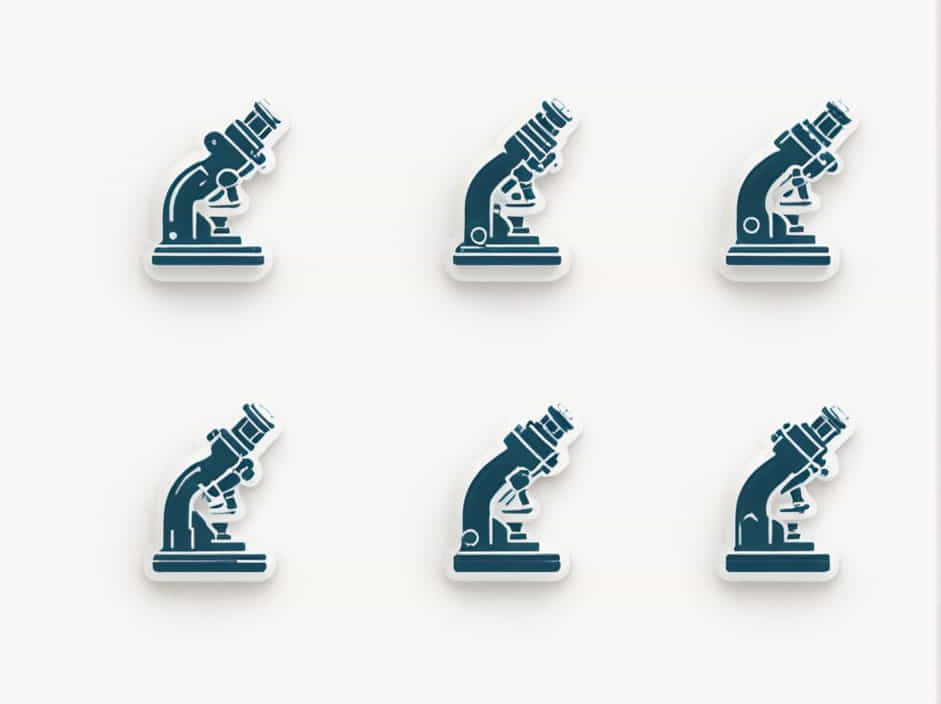A microscope is an essential tool in science, allowing us to observe objects that are too small for the naked eye. From biology to material science, microscopes play a crucial role in research and discovery. But how does a microscope work, and what are its main components?
Understanding the parts of a microscope and their functions can help users operate it more effectively. Whether you’re a student, researcher, or hobbyist, knowing these components will enhance your ability to explore the microscopic world.
Main Parts of a Microscope
Microscopes have several key parts that work together to magnify objects. These can be divided into optical components (related to magnification and light) and mechanical components (related to structure and movement).
1. Eyepiece (Ocular Lens)
The eyepiece is the part of the microscope where you look through to see the magnified image. It typically contains a lens with a magnification of 10x, but some models have higher magnification.
- Function: Magnifies the image produced by the objective lens.
- Some microscopes have binocular eyepieces (two lenses) for more comfortable viewing.
2. Objective Lenses
Located on the revolving nosepiece, the objective lenses provide additional magnification. Most microscopes have three or four objectives with different magnification levels:
- Low-power objective (4x or 10x) – Used for scanning the specimen.
- Medium-power objective (20x or 40x) – Provides a closer look at details.
- High-power objective (60x or 100x) – Used for detailed examination, often with oil immersion.
- Function: Magnifies the specimen before the image is sent to the eyepiece.
3. Nosepiece (Revolving Turret)
The nosepiece holds the objective lenses and allows the user to switch between them by rotating it.
- Function: Enables easy adjustment of magnification by switching lenses.
4. Stage
The stage is a flat platform where the specimen slide is placed. It usually has clips to hold the slide in place.
- Function: Supports the specimen and allows for precise positioning under the objective lenses.
Some advanced microscopes have mechanical stages, which allow fine movements using control knobs.
5. Stage Clips
These are small metal clips on the stage that hold the slide securely in place.
- Function: Prevents the slide from shifting during observation.
6. Coarse and Fine Focus Knobs
Microscopes have two types of focus knobs:
- Coarse focus knob – Moves the stage up and down quickly to bring the specimen into rough focus.
- Fine focus knob – Adjusts the focus more precisely, allowing for a clear and detailed image.
- Function: Helps bring the specimen into sharp focus for clearer observation.
7. Light Source (Illuminator)
Modern microscopes use LED or halogen bulbs as a light source, while older models use mirrors to reflect natural light.
- Function: Provides the necessary light to illuminate the specimen for better visibility.
8. Condenser Lens
The condenser is located under the stage and focuses light onto the specimen. Some condensers have an adjustable diaphragm to control the amount of light.
- Function: Directs and concentrates light for clearer and brighter images.
9. Diaphragm (Iris or Aperture Control)
The diaphragm is a rotating disk with different-sized openings that adjust the amount of light passing through the specimen.
- Function: Controls the intensity and contrast of light for better image clarity.
10. Arm
The arm is the curved or straight structure connecting the base to the body tube.
- Function: Supports the optical components and provides a handle for carrying the microscope safely.
11. Base
The base is the bottom part of the microscope that provides stability.
- Function: Supports the entire microscope and houses the light source in some models.
12. Body Tube
The body tube connects the eyepiece to the objective lenses.
- Function: Maintains the correct distance between lenses for proper magnification.
13. Mirror (in Older Microscopes)
Some traditional microscopes use a mirror instead of an internal light source to reflect external light onto the specimen.
- Function: Directs natural or artificial light to illuminate the slide.
How a Microscope Works
A microscope works by using a combination of lenses to magnify an image. Here’s how the process happens:
- Light from the illuminator passes through the specimen on the stage.
- The condenser lens focuses the light onto the specimen.
- The objective lens magnifies the image of the specimen.
- The magnified image is then passed to the eyepiece, where it is further enlarged for the viewer.
By adjusting the focus knobs, the image can be made sharper and clearer.
Types of Microscopes
There are several types of microscopes, each designed for different purposes:
1. Compound Microscope
- Uses multiple lenses to magnify specimens.
- Commonly used in biology and medical laboratories.
2. Stereo Microscope
- Provides a 3D view of larger objects.
- Used for dissections and circuit board inspections.
3. Electron Microscope
- Uses electrons instead of light to magnify extremely small structures.
- Can magnify up to millions of times.
- Used in nanotechnology and molecular biology.
Tips for Using a Microscope
To get the best results from a microscope, follow these tips:
- Start with the lowest magnification and gradually increase.
- Use the coarse focus knob first, then fine-tune with the fine focus knob.
- Adjust the diaphragm for the best lighting.
- Keep lenses clean using lens paper (never use a regular cloth).
- Store the microscope properly to prevent dust accumulation.
Understanding the parts of a microscope and their functions is essential for using it effectively. Each component plays a vital role in magnification, focusing, and illumination.
By learning how to properly handle and adjust a microscope, users can explore the microscopic world with greater clarity and precision. Whether for scientific research, medical studies, or educational purposes, microscopes remain one of the most valuable tools in modern science.
